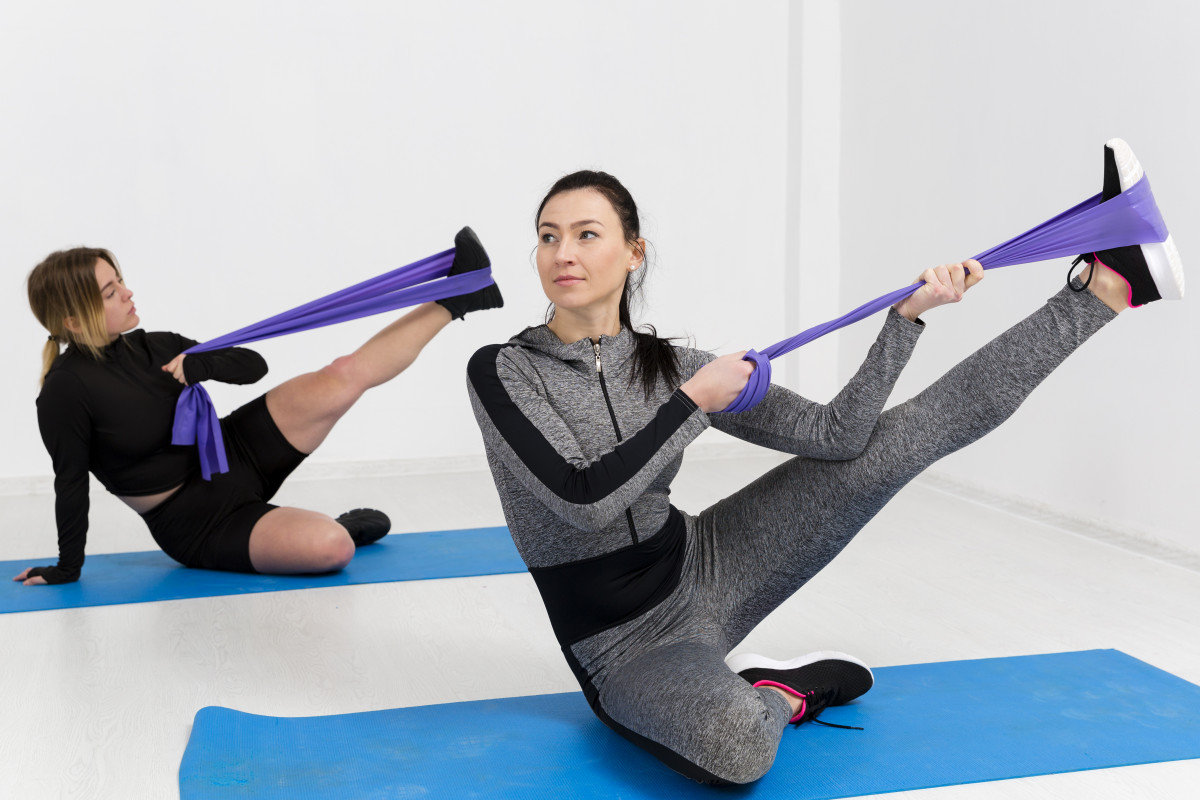Introduction
Flexibility is a cornerstone of overall well-being, and Pilates has emerged as a powerful practice to enhance and maintain flexibility. In this comprehensive guide, we’ll explore the world of Pilates for flexibility, examining the principles, benefits, and a diverse range of exercises that can transform your body, increase your range of motion, and elevate your overall sense of vitality.
Section 1: The Flexibility-Focused Philosophy of Pilates
- Introduction to Pilates for Flexibility: Explore how the principles of Pilates, including control, precision, and breath, contribute to the development of flexibility.
- The Mind-Body Connection: Discuss how Pilates fosters a deep connection between the mind and body, essential for unlocking flexibility.
Section 2: Understanding Flexibility in the Pilates Context
- Dynamic vs. Static Flexibility: Differentiate between dynamic flexibility (the ability to move joints through their full range of motion) and static flexibility (the ability to hold a stretched position).
- Functional Flexibility: Explore how Pilates emphasizes functional flexibility, enhancing movement patterns relevant to daily activities.
Section 3: Benefits of Pilates for Flexibility
- Increased Range of Motion: Discuss how Pilates exercises target and stretch different muscle groups, leading to improved joint flexibility.
- Reduced Muscle Tension: Explore how the controlled movements of Pilates release muscle tension, contributing to greater overall flexibility.
- Improved Posture: Highlight the impact of Pilates on posture, as increased flexibility enables a more upright and aligned stance.
Section 4: Pilates Exercises for Flexibility
- Dynamic Stretching Movements: Introduce dynamic Pilates exercises that promote flexibility, including the Saw, Swan Dive, and Mermaid.
- Stretching Sequences: Provide step-by-step instructions for Pilates stretching sequences, emphasizing controlled movements and breath awareness.
Section 5: Targeted Flexibility Workouts
- Flexibility Focus for Different Muscle Groups: Break down Pilates workouts that specifically target flexibility in areas such as the spine, hips, shoulders, and hamstrings.
- Flowing Flexibility Routines: Explore Pilates routines that seamlessly combine flexibility exercises with a focus on core strength and overall body conditioning.
Section 6: Pilates Equipment for Flexibility
- Mat vs. Equipment-Based Flexibility Exercises: Compare mat-based flexibility exercises with those incorporating specialized equipment like the reformer or the Cadillac.
- Flexibility Enhancement with Props: Discuss how props such as resistance bands and balls can be used to intensify and diversify Pilates flexibility exercises.
Section 7: Pilates and Yoga for a Comprehensive Flexibility Approach
- Synergy of Pilates and Yoga: Explore the complementary nature of Pilates and yoga, combining Pilates strength with yoga’s emphasis on deep stretching.
- Incorporating Yoga Poses into Pilates: Introduce yoga poses that align with Pilates principles, promoting joint flexibility and muscular lengthening.
Section 8: Flexibility for Different Fitness Levels
- Beginner-Friendly Flexibility Exercises: Provide accessible Pilates exercises for beginners, emphasizing the importance of gradual progression.
- Intermediate and Advanced Flexibility Movements: Explore more advanced Pilates flexibility exercises suitable for those seeking greater challenges.
Section 9: Personalizing Pilates for Specific Flexibility Goals
- Tailoring Pilates for Improved Performance: Discuss how Pilates can enhance flexibility for athletes and individuals engaging in specific sports or activities.
- Flexibility for Stress Relief: Explore how the mind-body connection in Pilates contributes to stress reduction through enhanced flexibility.
Section 10: Real-Life Stories of Flexibility Transformation
Feature personal accounts of individuals who have experienced significant improvements in flexibility and overall well-being through consistent Pilates practice.
Section 11: Incorporating Pilates for Flexibility into Your Routine
- Creating a Flexible Routine: Provide guidance on incorporating Pilates for flexibility into your regular workout routine, including frequency and duration recommendations.
- Flexibility Breaks During the Day: Explore the concept of incorporating short Pilates flexibility sessions into daily activities to counteract the effects of prolonged sitting.
Section 12: The Future of Pilates for Flexibility
Discuss emerging trends and innovations in the world of Pilates for flexibility, including virtual classes, technology integration, and evolving exercise styles.
Conclusion
Summarize the key takeaways, emphasizing that Pilates for flexibility is not just a workout but a lifestyle that nurtures physical and mental well-being. Encourage readers to explore the unique benefits of Pilates for flexibility and consider incorporating it into their fitness routine.
Discover more from Pilates All Ages
Subscribe to get the latest posts sent to your email.
